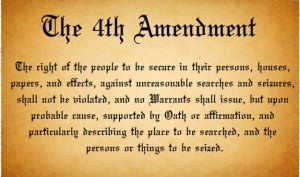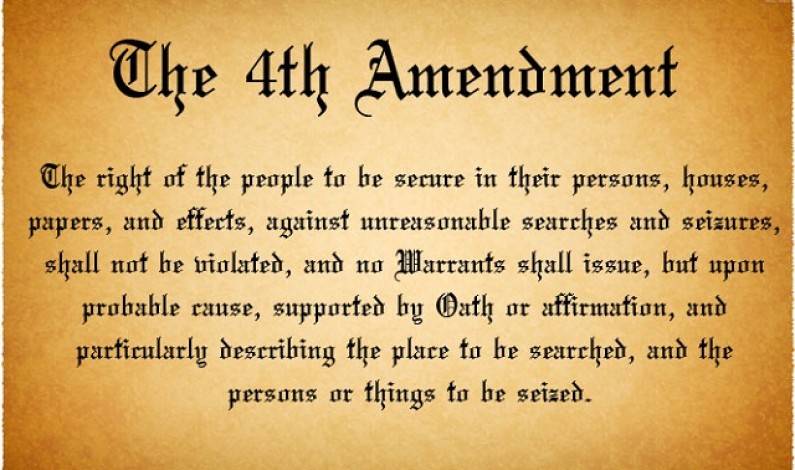Search Incident To Arrest Warrant Where Subject Of Warrant Was A Guest: The Government Can File Interlocutory Appeals In Criminal Cases
United States Court of Appeals for the Second Circuit
U.S v. Bohannon
No. 14-4679-cr
Decided May 31, 2016
Issue: Whether law enforcement officers had reason to believe that the subject of an arrest warrant is within a third party’s residence and whether evidence seized incident to that arrest be excluded from trial as the fruit of an unlawful entry.
Holding: The United States Court of Appeals held based on the totality of the circumstances, at the time of the entry, law enforcement officers possessed the requisite reason to believe that defendant was then present in the third party’s residence.
Whether the subject of an arrest warrant is apprehended in his own home or a third party’s residence where he is a guest, his Fourth Amendment privacy rights with respect to entry are those stated in Payton v. New York, 445 U.S. 573, 603 (1980), i.e., at the time of entry, arresting officers must possess (a) a valid arrest warrant for the subject and (b) reason to believe that the subject is then in the premises. In such circumstances, the third party’s Fourth Amendment right to have a search warrant authorize entry into his home, Steagald v. United States, 451 U.S. 204, 222 (1981), does not extend to the subject of the arrest warrant.
 Facts: The United States challenges the district court’s order suppressing drugs and money seized incident to Bohannon’s arrest in the home of Shonsai Dickson, United States v. Bohannon, 67 F. Supp. 3d 536 (D. Conn. 2014). The district court ruled that because Bohannon’s apprehension was pursuant to an arrest warrant, he could not mount a Fourth Amendment challenge to the seizures at issue based on the fact that entry into Dickson’s home was not authorized by a search warrant, Steagald v. United States, 451 U.S. 204, 222 (1981).
Facts: The United States challenges the district court’s order suppressing drugs and money seized incident to Bohannon’s arrest in the home of Shonsai Dickson, United States v. Bohannon, 67 F. Supp. 3d 536 (D. Conn. 2014). The district court ruled that because Bohannon’s apprehension was pursuant to an arrest warrant, he could not mount a Fourth Amendment challenge to the seizures at issue based on the fact that entry into Dickson’s home was not authorized by a search warrant, Steagald v. United States, 451 U.S. 204, 222 (1981).
The district court suppressed the seized drugs and money, concluding that, at the time arresting officers entered Dickson’s home, they lacked the requisite reason to believe that Bohannon was then in the premises, Payton v. New York, 445 U.S. 573, 603 (1980). The government argues that the district court correctly relied on Payton, rather than Steagald, in analyzing Bohannon’s Fourth Amendment challenge, but erred in concluding that the totality of circumstances failed to satisfy the reason to believe presence prong of Payton. The United States Court of Appeals for the Second Circuit held that they agree for reasons set forth in this opinion, vacated the challenged suppression order and remand the case to the district court for further proceedings consistent with this opinion.
Legal Analysis: The United States Court of Appeals for the Second Circuit held, while acknowledging that an arrest warrant carries with it the authority to enter the home of the warrant subject, Bohannon here maintained that execution of such a warrant in a third party’s home required the further entry authorization of a search warrant, which was plainly lacking here, Steagald v. United States, 451 U.S. at 222. Second, Bohannon maintained that, even if Steagald protections did not extend to him, the entry and ensuing arrest and search were unlawful under Payton v. New York, 445 U.S. 573, because authorities lacked the requisite reason to believe that he was in those premises at the time of entry.
On appeal from a challenged suppression order, the Court held that it reviews a district court’s findings of fact for clear error, and its resolution of questions of law and mixed questions of law and fact de novo, United States v. Bershchansky, 788 F.3d 102, 109 (2d Cir. 2015). The government does not challenge any factual findings of the district court. Rather, it challenges that court’s application of undisputed facts to the standard enunciated in Payton v. New York, 445 U.S. 573 and, specifically, its determination that the totality of circumstances did not afford law enforcement officers reason to believe that Bohannon was in Dickson’s apartment at the time they entered those premises. The Court held that it reviews this mixed question of law and fact de novo, United States v. Singletary, 798 F.3d 55, 59 (2d Cir. 2015).
The United States Court of Appeals held that they also review de novo Bohannon’s legal contention that, regardless of whether authorities had reason to believe that he was in Dickson’s apartment at the time of entry, that entry violated the Fourth Amendment because it was not authorized by a search warrant as required by Steagald v. United States, 451 U.S. 204, and concluded that the subject of an arrest warrant is apprehended in a third party’s residence where he is a guest, the subjects Fourth Amendment privacy rights with respect to entry of that residence are no greater than the privacy rights he would have had if apprehended in his own home and, thus, are delineated by Payton, not Steagald.
The totality of circumstances here satisfied Payton’s requirement that, at the time of entry, law enforcement officers have reason to believe that the subject of the arrest warrant is within the entered premises.
 The Payton and Steagald Rules for Executing Arrest Warrants at Residences
The Payton and Steagald Rules for Executing Arrest Warrants at Residences
The Fourth Amendment recognizes the right of the people to be secure in their persons, houses, papers, and effects, against unreasonable searches and seizures, U.S. Const. amend. IV. Where, as here, authorities have a valid warrant for a person’s arrest, the Supreme Court has deemed it constitutionally reasonable to require the warrant subject to open his doors to the officers of the law, Payton v. New York, 445 U.S. at 602,03.Thus, the Court ruled that an arrest warrant founded on probable cause implicitly carries with it the limited authority to enter a dwelling in which the suspect lives when there is
Thus, the Court ruled that an arrest warrant founded on probable cause implicitly carries with it the limited authority to enter a dwelling in which the suspect lives when there is reason to believe the suspect is within, Id. at 603. In these circumstances, the?entry does not require the further authorization of a search warrant.
The United States Court of Appeals held that the Supreme Court observed that two distinct Fourth Amendment interests are implicated when law enforcement officers enter a third party’s residence to execute an arrest warrant for a nonresident: (1) the subject of the arrest warrant has an interest in being free from an unreasonable seizure, id. at 216; and (2) the third party resident has an interest in being free from an unreasonable search of his home, id. Addressing itself only to the latter interest and, specifically, to the narrow issue of whether an arrest warrant as opposed to a search warrant is adequate to protect the Fourth Amendment interests of a third party resident not named in the warrant, the Supreme Court concluded that an arrest warrant was not adequate to protect such a person from an unreasonable search, Id. at 212,13. As to that third party resident, the Fourth Amendment requires the entry to be authorized by a search warrant.
The United States Court of Appeals held that Fourth Amendment rights are personal rights which may not be vicariously asserted, Rakas v. Illinois, 439 U.S. 128, 133?34 (1978); United States v. McCarson, 527 F.3d at 172 73. At the outset, we observe that it is no more possible to articulate a precise meaning for reason to believe as a standard for determining the likelihood of presence at a particular site, than it is to afford precise meanings to standards such as reasonable suspicion or probable cause, Ornelas v. United States, 517 U.S. 690, 695 (1996). That is because these standards are all common sense, nontechnical conceptions not readily, or even usefully, reduced to a neat set of legal rules, Id. at 695 96. Rather, they are fluid concepts that take their substantive content from the particular contexts in which the standards are being assessed,Id. at 696.
Thus, the Supreme Court has ruled only that probable cause to search is demonstrated where the totality of circumstances indicates a fair probability that the thing to be seized will be found in a particular place, Walczyk v. Rio, 496 F.3d 139, 156 (2d Cir. 2007). Precisely because reasonable suspicion is a concept so closely associated with investigative stops, we do not here assume that it equates exactly to Paytons reason to believe standard for determining the likelihood of presence.
The Court concludes that reason to believe that the subject of an arrest warrant is within particular premises requires more than a hunch as to presence, but less than a probability As with reasonable suspicion, reason to believe is not a particularly high standard, but it does require specific and articulable facts that, taken together with rational inferences drawn therefrom, provide a particularized and objective basis for thinking that the arrest warrant subject may be present within specific premises, United States v. Spencer, 684 F.2d 220, 223 (2d Cir. 1982) That standard is satisfied here by the following facts: The totality of circumstances known to law enforcement authorities at the time they entered third party Dickson’s residence to execute a valid warrant for Bohannon’s arrest supported reason to believe that Bohannon was then in those premises.
Accordingly, the district court’s suppression order is hereby vacated to the extent it concluded that the entry of Dicksons apartment violated Bohannons Fourth Amendment rights, and the case is remanded for further proceedings consistent with this opinion.
